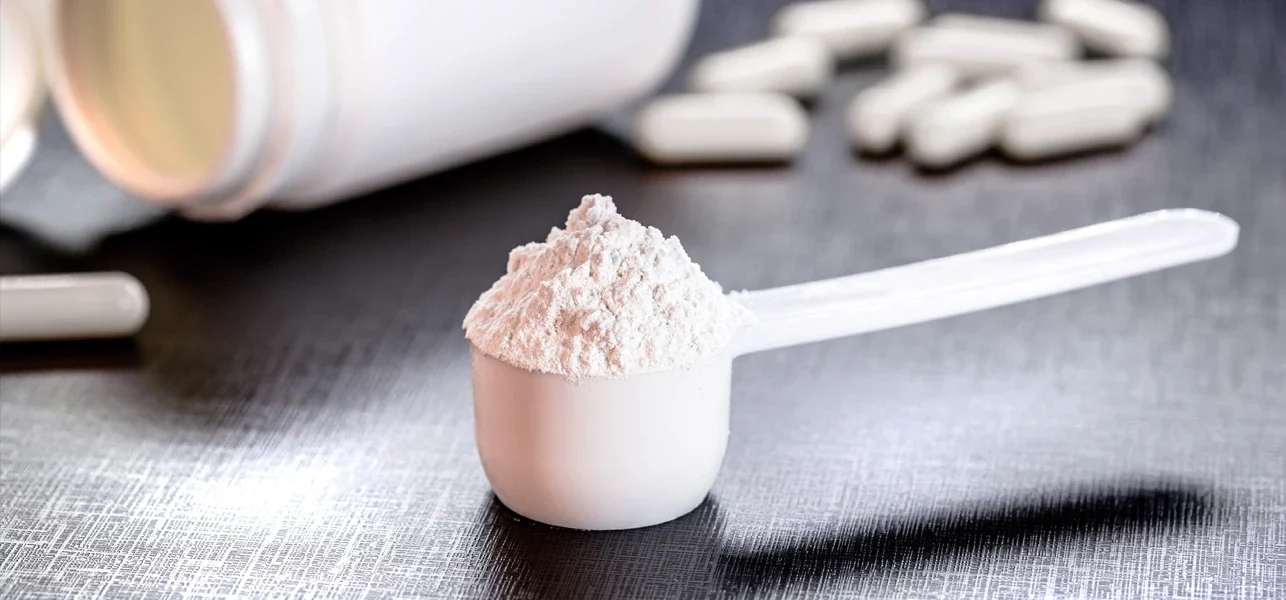How Long Does It Take to Get in Shape? Factors and Timeline

Many fitness programs claim to make you fit in two weeks. But the truth is, getting in shape takes plenty of time and dedication.
Everyone has unique goals, stamina, and muscle endurance, so there isn’t a specific time you would notice results. People who have exercised before could feel stronger in two weeks, while others may need at least two months to see any health benefits.
How long does it truly take to get in shape? If you’re curious about the duration of achieving fitness milestones, we can provide an average timeline.
How Long Does It Take to Get in Shape? Understanding the Time Frame
On average, it should take 6–8 weeks to notice a difference in your fitness. During the first week, you’ll gain mental benefits such as better concentration and moods. Then, you may shed body fat and experience a shorter recovery time after high-intensity interval training.
Research suggests that with a consistent exercise routine, someone can change their appearance and feel stronger after 6 weeks. This study evaluated the group’s body composition, strength, and cardiovascular fitness during resistance training and aerobic exercise.
Over the course of 6 weeks, everyone in the group lost body fat and gained more cardiovascular strength. However, the participants didn’t notice any changes, even though their bodies had changed in terms of percent body fat and lean muscle.
So, you could feel stronger in just over 40 days of exercise, but the physical results may not be as visible. The 3-month mark should be enough time to feel good and see a difference in your body weight.
What Are the Factors Influencing Fitness Progress?
The time frame for fitness progress depends on your body and health goals. Someone who has practiced cardiovascular training may see results after only a few weeks of regular exercise.
Below are some factors that could influence your fitness progress:
#1 Age
As you age, things start to change in your body. Some of these things include decreased muscle mass, endurance, and range of motion. You might ache more after exercise or feel like you can’t perform physical activity for longer than 60 minutes. These changes are only gradual throughout your mid-30s and 40s.
Studies have proven that aging decreases physical activity by 40–80%. Therefore, it could take longer to get in shape if you’re not within the peak ages of 20 and 35.
Don’t let this factor stop you from achieving your goals, whether that’s to lose ten pounds or run a short marathon. Proper training can help prevent age-related disorders such as osteoarthritis, dementia, and diabetes.

Advertisement
#2 Current fitness level
Your current fitness level will determine how long it takes to lose weight or feel strong. People who work in active careers, such as farming and construction, usually have greater cardiovascular strength. This is because they’re constantly moving their bodies and burning calories.
Those who like to get their steps in or have previously exercised for weight loss may be fitter too. It depends on how much you currently move around and whether you have any medical problems that stop you from exercising regularly.
#3 Genetics
Genetics plays a huge role in muscular power and general fitness. Some people naturally have stronger muscle fibers that allow them to sprint faster, while others have powerful muscle contraction speeds for endurance runs.
Research suggests that genetics can explain up to 72% of the differences between exercise outcomes. This means that everyone adapts to strength training, cardiovascular exercise, and muscle-building differently.
#4 Health conditions
Certain health problems could slow down your results. For example, conditions such as heart disease, diabetes, osteoporosis, and high blood pressure will stop some people from performing regular physical activity.
Doctors may recommend short bursts of exercise in limited amounts to improve your heart rate.
Types of Fitness Goals and Their Time Frames
Everyone has personal health goals. Your type of goal will determine how long it takes to gain the fitness benefits, such as strengthened heart functions and regulated breathing after exercise. Learning about each goal and its unique time frames will give you a deeper insight into the average ‘getting in shape’ timeline.
Here are some fitness goals and their duration:
#1 Weight loss
People who want to lose weight should focus on slow weight loss. Following a fad diet and intense training programs without breaks could make you extremely weak. Therefore, everyone should take their time losing weight, even though it’s tempting to try restrictive methods to see quick results.
The average time frame for healthy and sustainable weight loss is 1–2 pounds a week. You can achieve this with at-home bodyweight resistance exercises, long-distance runs, and low-calorie dieting. It’s recommended that people work their way up to 150 minutes of moderate-intensity aerobic exercise weekly.
However, some factors could affect your weight loss speed. These, as explained before, include genetics, age, weight, diet, and sleep patterns. To maintain sustainable and consistent results, gradually increase the intensity of your workout routine to burn extra calories. You should also lower your calorie intake if you hit a weight loss plateau.
To sum up, the timeline for losing weight should take one month to lose 8–10 pounds.

#2 Muscle building
Building muscle is an even slower process than weight loss.
You can’t expect to see muscle definition after 1–2 weeks of weight lifting. Consistent training, paired with a high-protein diet, could produce noticeable results within 8 weeks. It’s also possible to see “newbie gains” in one month, which refers to a rapid increase in muscle mass for beginners.
Similar to weight loss, some factors will influence your muscle growth rate. These, again, include genetics, gender, diet, weight, and rep range.
For example, using a heavy weight but only doing 4–5 reps will increase your strength rather than build efficient muscle. Men can also build muscle faster because they have higher levels of testosterone.
To increase lean muscle mass, you must increase your daily calorie intake by 500–1,000 calories. This type of diet is known as bulking, which is the process of consuming more food to increase your muscle size and strength. Your body also uses excess fat for energy during weight lifting.
It’s also worth taking creatine supplements to enhance muscle performance and eating more protein to boost recovery. The recommended daily protein intake for muscle growth is 1.6 grams per 2.pounds of body weight.
#3 Cardiovascular endurance
You can improve your cardiovascular endurance in 6–8 weeks.
This is the average time to move up on the fitness scale. During this time, you should be doing regular exercise, whether that’s long-distance runs, morning walks, or other aerobic activities such as swimming and cycling.
There are several types of training you can do to increase your endurance, which include:
- Distance training: This is a common form of training that boosts your overall endurance. You can set a distance goal, such as running three miles or cycling 5 miles. To get comfortable with these exercises, it’s worth using a treadmill or exercise bike to ease your body into it.
- Tempo training: Tempo-based training means performing an exercise at a specific tempo or pace. You also need to choose a certain distance or time frame for completing that exercise. The goal is to find a maintainable pace you can follow without feeling tired.
- Interval training: High-intensity interval training (HIIT) involves alternating short periods of intense exercise with rest. This exercise routine will improve your stamina, strength, and endurance because your heart and lungs can transport oxygen efficiently.
- Circuit training: Performing a combination of six or more exercises without rest is circuit training. You might do cardio, strength, and resistance training to burn extra calories. Circuits will also provide a full-body workout since this training offers more variety.
#4 Mobility and flexibility
Consistent stretching and mobility exercises can improve your range of motion within 2–4 weeks.
A study has backed up this time frame, which includes a group of people who stretched 5 times per week compared to other groups who only stretched once and three times per week.
The results showed improved flexibility and range of motion in those who stretched 5 times a week. Therefore, perform at least three stretching sessions per week to feel stronger.
You can try a few beginner-friendly mobility exercises to increase your flexibility. Some exercises comprise hip circles, frog pose to deep squat, chest and shoulder opener, and shoulder circles.
One good example includes the downward dog into a child’s pose. Get on all fours, ensuring your hands are shoulder-width apart. Raise your knees off the ground so your body resembles an upside-down “V” shape. Hold that position for 30 seconds before lowering your knees and leaning forward. Keep your butt on your ankles and arms extended beside your head.
The benefits of regular mobility practice include:
- Decreased risk of heart disease
- Lower blood pressure
- Better balance
- Stronger muscle performance
- Reduced risk of osteoarthritis
- Improved heart rate

#5 Workout intensity and progression
There are other goals to consider, such as intensity and consistency, progressive overload, and recovery time.
These play a huge role in muscle strength and overall endurance. People who want to lose weight slowly while building muscle should follow these goals to boost their progress.
Increasing the intensity of each workout over time will constantly challenge your body and improve your fitness level. Sticking to the same routine could inhibit your results since you’ll adjust to the difficulty. While switching up your workouts, stay consistent and push yourself for longer to achieve personal goals.
Progressive overload means you will gradually increase the weight, frequency, or reps in your strength training routine. This goal helps your muscle cells contract and repair during weight lifting. Over time, you may feel stronger or more capable of performing hard-intensity exercise.
Finally, getting adequate amounts of rest can help prevent burnout and injuries. For example, not letting your legs recover could result in running injuries such as stress fractures, shin splints, and ankle sprains. Taking at least two days off each week can help boost your results.
#6 Nutrition and lifestyle changes
Someone with a healthy diet, high water intake, and an undisturbed sleep routine is more likely to increase their fitness progress in a shorter time frame. These aspects are essential for fueling your body after intense workouts.
A balanced diet, which includes plenty of protein, vitamins, minerals, and fiber, can enhance your overall well-being. This is because proper nutrition maximizes your athletic performance by feeding your muscles and increasing energy output. Aim to get more carbs, proteins, and healthy fats from whole foods like fruits and veggies rather than processed foods.
The recommended daily water intake for women is 9 cups and 12 cups for men. Drinking enough water can help your body efficiently transport carbs, protein, and fats to your muscles. Consistent hydration could also delay fatigue when you’re performing intense exercise.
In terms of sleep and stress management, you need to focus more on your mental health. A broken sleep routine will make you tired and less inclined to exercise. High stress levels can also strip your motivation and cause muscle aches from the tension. One way to get better sleep and reduce stress is to practice meditation every morning and evening.
What Happens When You Stop Working Out?
Long periods of physical inactivity can lead to muscle loss, higher blood pressure, and decreased fitness. You will also lose your endurance, meaning you won’t recover easily during intense exercise.
Taking a short break from exercising is safe for your body and also recommended by athletes, but remaining inactive for longer than two weeks can diminish your results. In 1–2 weeks, you’ll feel more winded and out of breath. This is because your heart and lungs will have less efficient blood flow.
Once you reach 3 weeks, you may lose muscle. Your body thinks you don’t need that muscle anymore, so it breaks it down slowly for energy usage. Therefore, you may not look as toned or have a defined muscular physique.
If you can, continue your cardiovascular fitness and strength training routine after two weeks to maintain your results. Some people like walking for 2 hours on their rest days to enjoy the outside or retain strength. Walking can be a simple exercise that doesn’t strain your body.
FAQs
It should take two months to reach a moderate fitness level. Noticeable signs that you’re fitter include less recovery time during exercise and a healthy resting heart rate. The time it takes also depends on the intensity of your workouts.
Yes, you can get fit in 90 days with consistent exercise. Even after 6 weeks, you’ll have a lower heart rate and more energy. Everyone is different, so it may take longer to see results.
You must exercise 3–5 times a week to get in shape. It’s also important to have rest days to ensure you don’t experience burnout – physical and mental exhaustion that decreases your energy levels. If you haven’t exercised before, start working out three times a week and increase the amount gradually.
Some people may see results in 2–4 weeks. Others don’t feel stronger until the eight-week mark. Your progress is unique, so focus on consistency and motivation when exercising.
A Word From an MD
Climbing up the fitness ladder can be challenging. However, it’s possible to reach your goals with time and dedication.
To live a healthier lifestyle, you must avoid restrictive diets and focus on sustainable workout programs, balanced dieting, and enjoyable exercises. Research suggests that finding an exercise you enjoy will improve consistency.
Build a nutritious meal plan to fuel your body too. Many people forget about their diets when improving their fitness progress. So, plan nutrient-dense meals that contain fresh fruits, green veggies, whole grains, seafood, and unprocessed lean meat. The same goes for drinking water every day – if you struggle to drink enough fluids, add mint.
Starting your fitness journey can be overwhelming. With the help of a personal trainer or dietitian, you can create the perfect plan for getting stronger and healthier.
Conclusion
The average time it takes to get in shape is 6–8 weeks. You should undergo resistance training, lift weights safely, and perform regular cardio to increase your fitness level. Everyone has unique goals, so don’t rely on this specific timeline.
For more guidance, speak to a personal trainer or registered dietitian.







Comments (0)